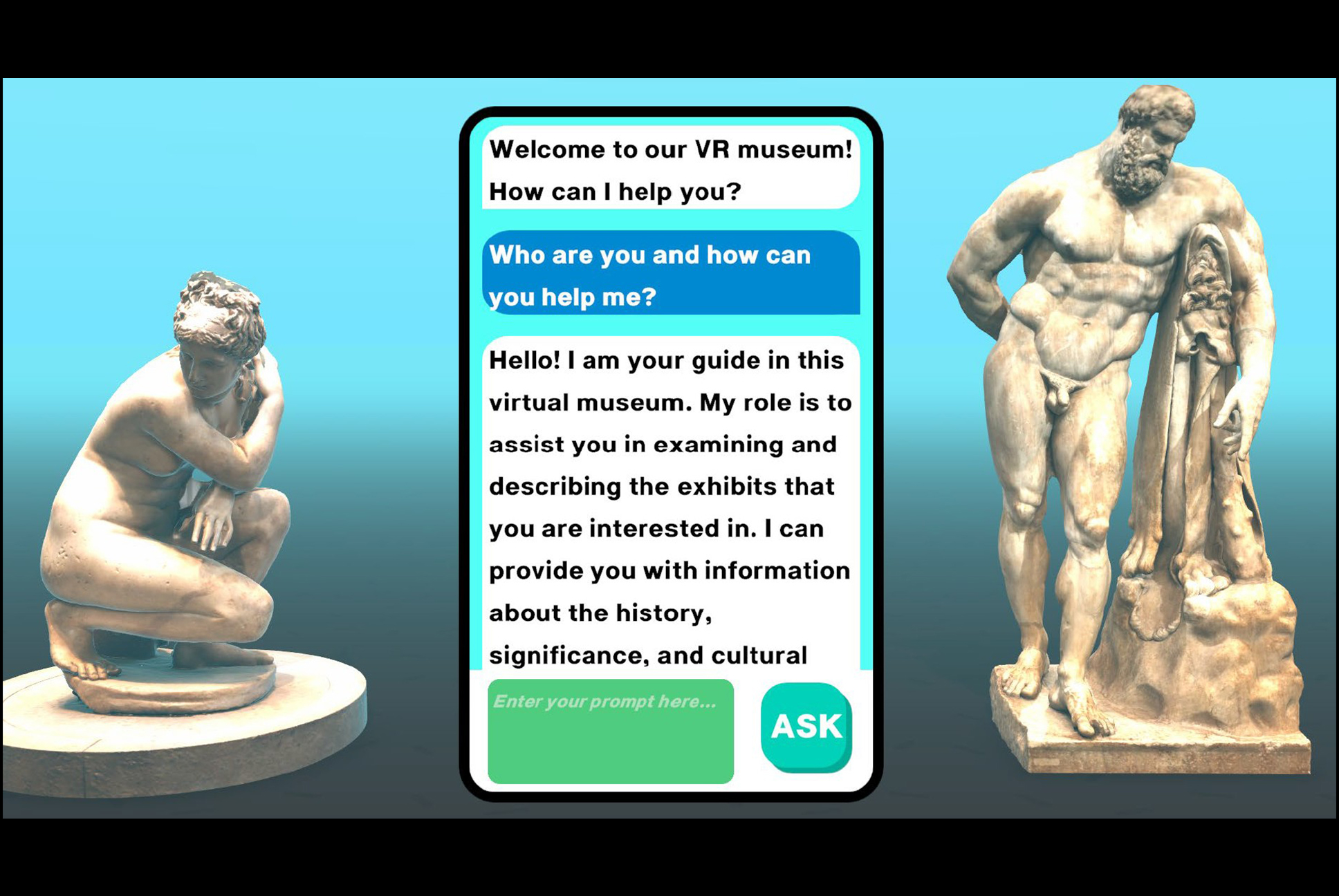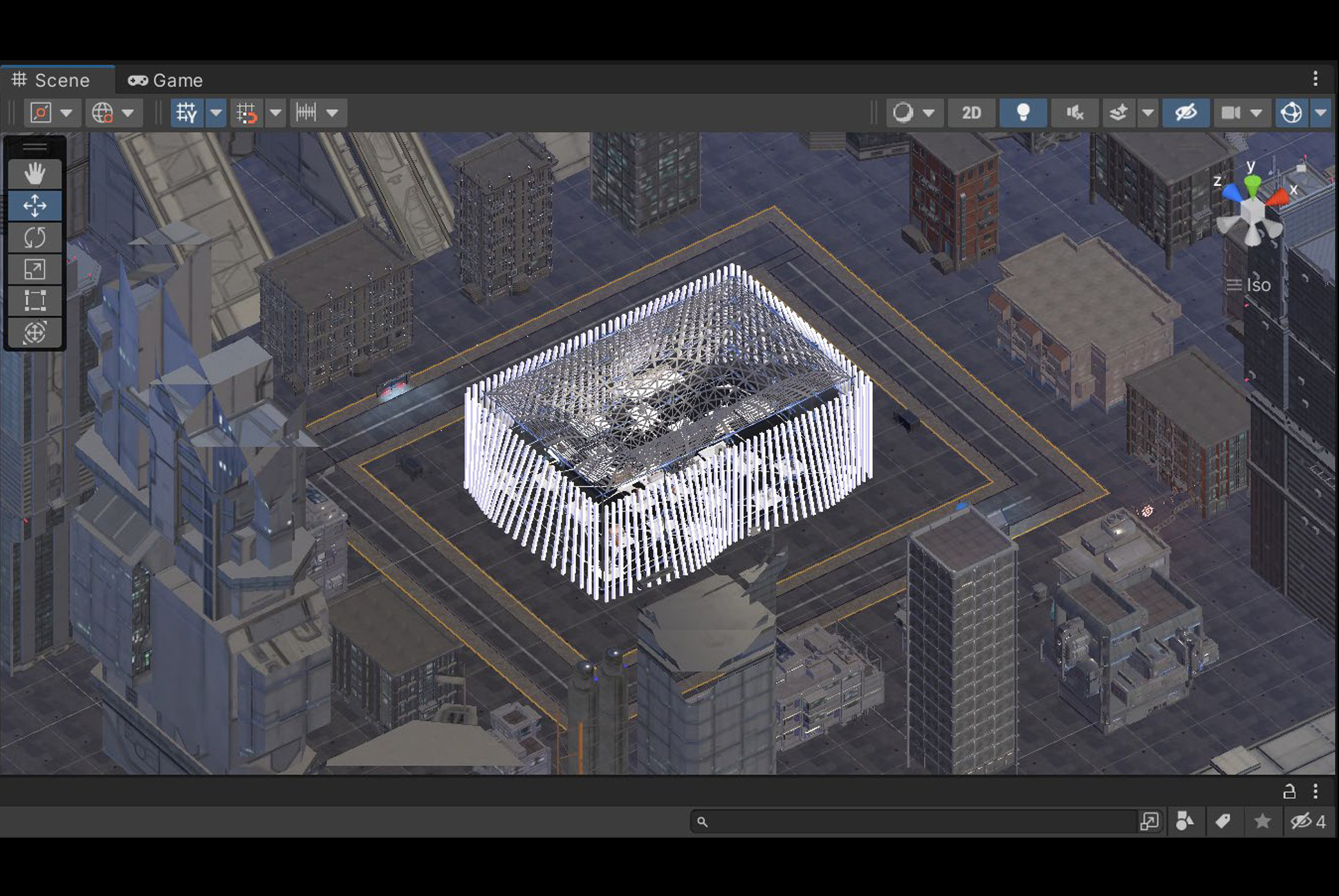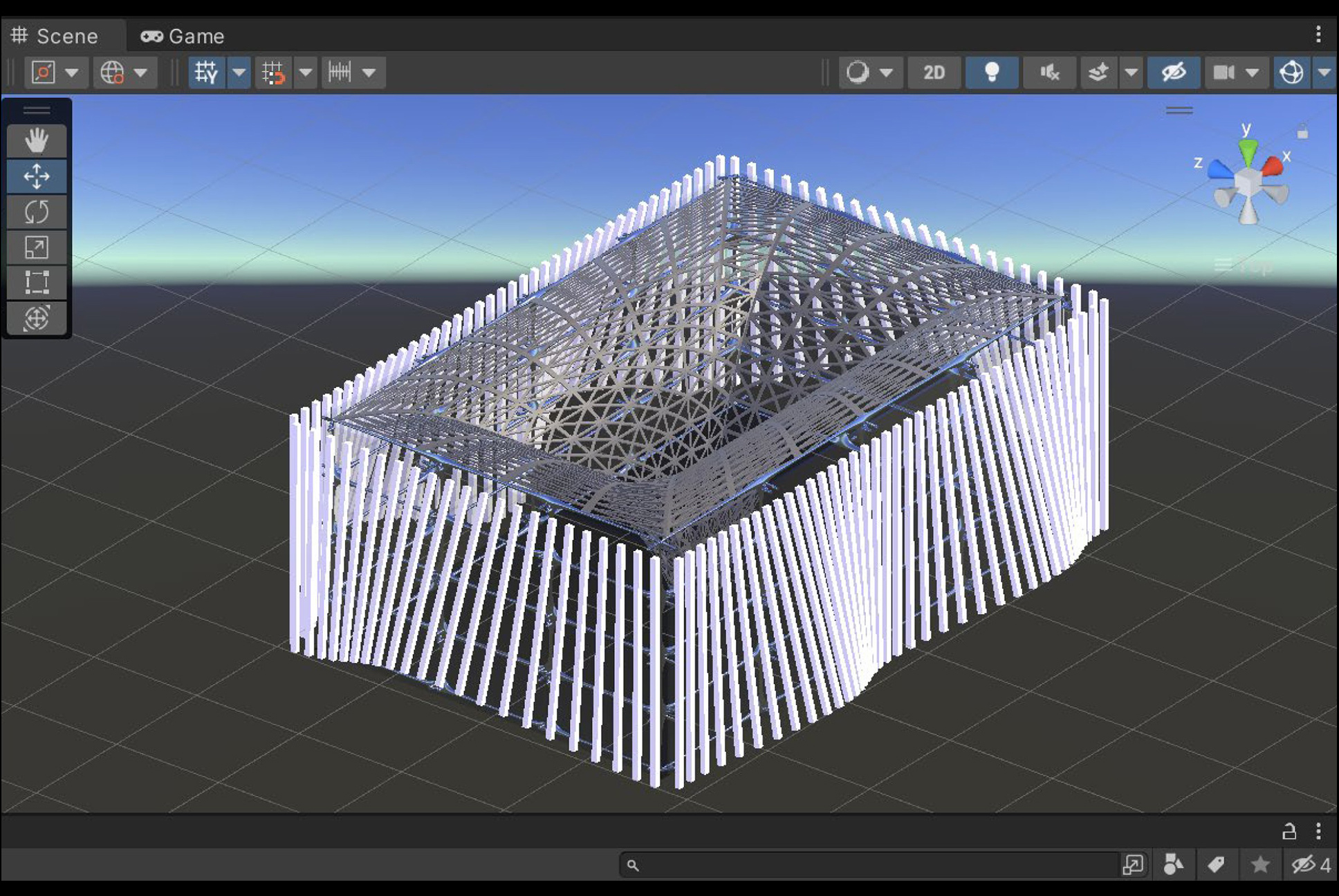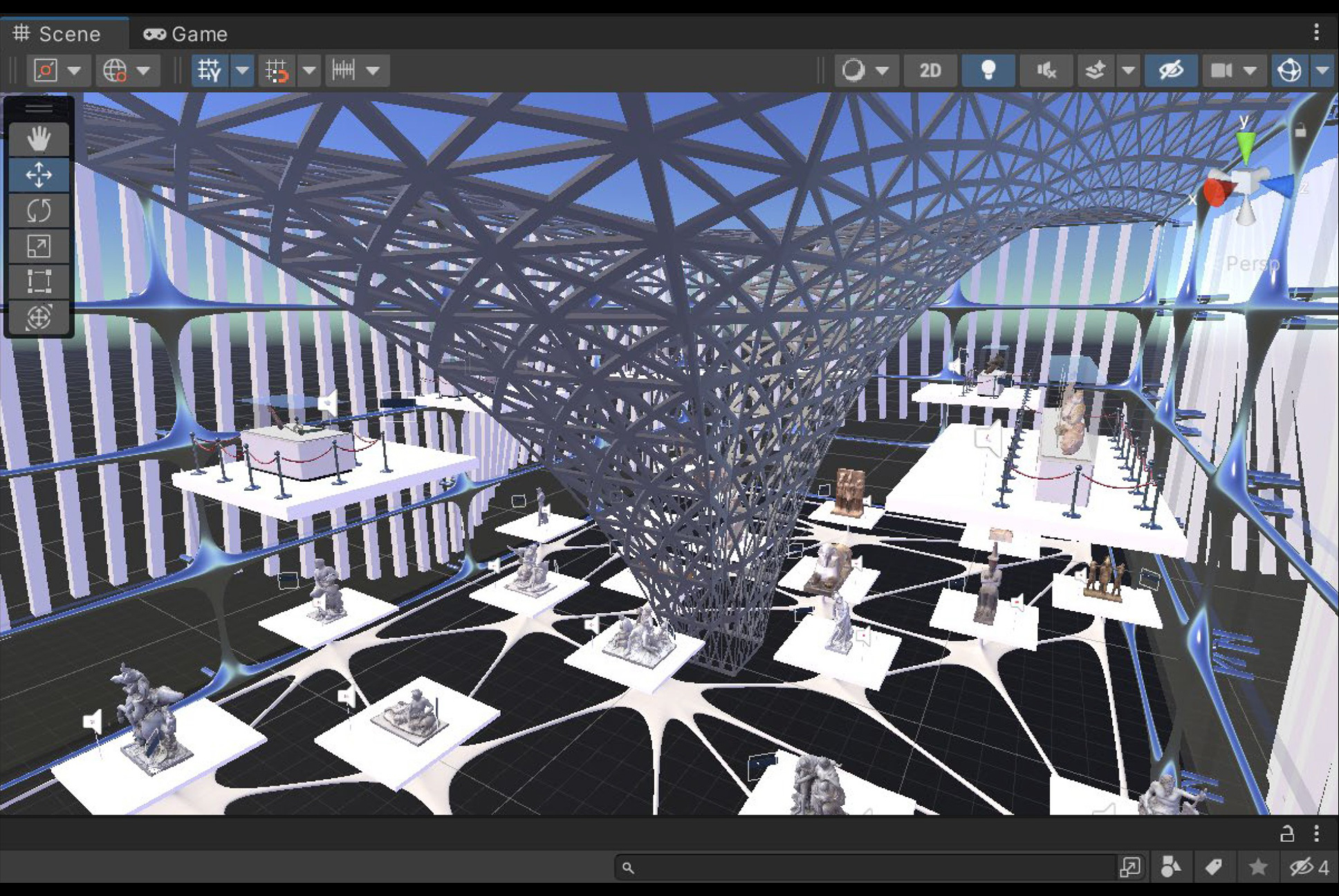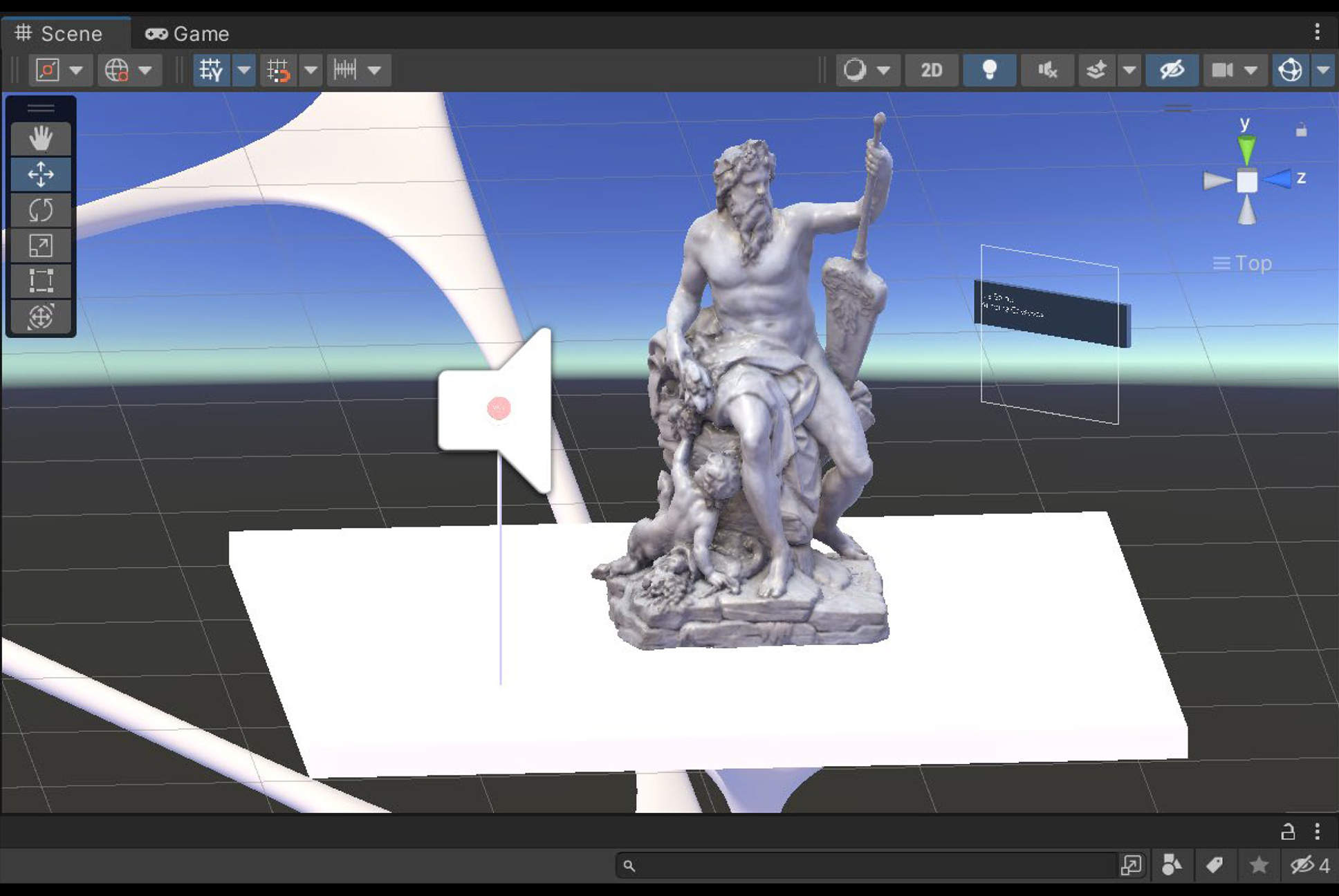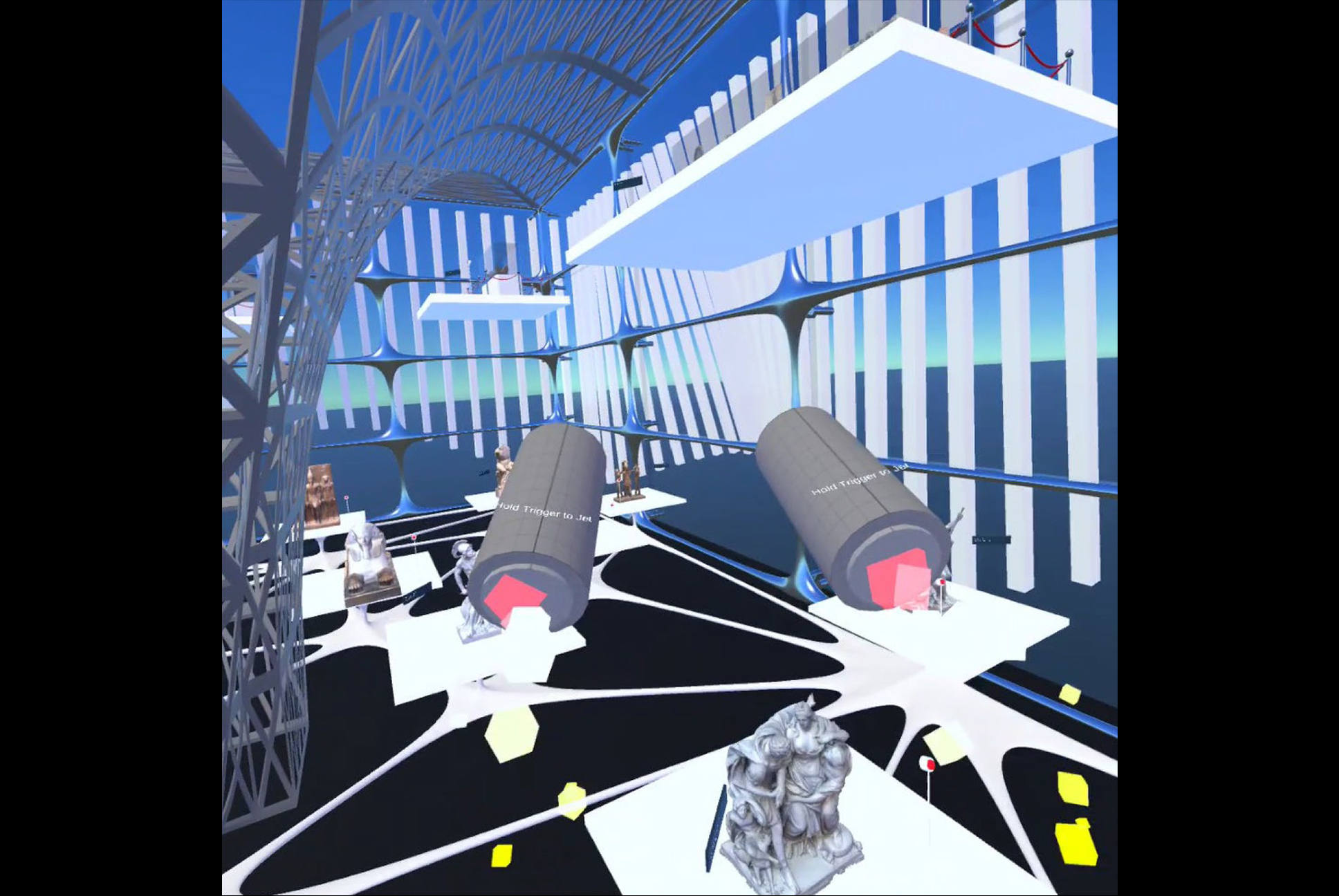LIMINAL
Integrating parametric design with VR and conversational AI to create immersive, educational museum experiences
This project investigates the integration of Virtual Reality (VR) within architectural design, focusing on the development of a virtual museum environment. By combining Unity’s real-time rendering capabilities with parametric modeling via Grasshopper and interactive AI systems through ChatGPT, the research demonstrates a novel workflow that enhances design flexibility, stakeholder engagement, and user interaction. The methodology includes the generation of museum geometry through algorithmic design, its transfer into Unity for immersive visualization, and the embedding of artifacts and conversational agents to simulate educational experiences. The project highlights potential applications in cultural dissemination, collaborative design, and interactive learning.
The project aims to reimagine architectural practice and museum design through the lens of immersive technology. Traditional design workflows often lack real-time interactivity and spatial immersion. By integrating VR and AI, the research responds to the need for new tools that support complex design exploration, cross-disciplinary collaboration, and more engaging cultural experiences. The work builds on current literature in virtual prototyping, museum informatics, and human-computer interaction. Central to the challenge is maintaining the fidelity of parametric designs during cross-platform integration while creating meaningful user interaction in a virtual environment
The workflow begins with the parametric modeling of a museum using Grasshopper, where architectural elements are procedurally defined and refined. A custom plugin is developed to export geometry directly to Unity, ensuring consistency and scalability. Real-world artifacts are captured using photogrammetry and Instant-NERF methods, then prepared and positioned within the VR environment. The Unity engine serves as the rendering and interaction platform, supporting the integration of Oculus Quest 2 for user control. ChatGPT is embedded both in Grasshopper to assist during design and in Unity to function as a virtual museum assistant, facilitating natural language interactions and enhancing the didactic layer of the experience.
The final virtual museum supports full VR navigation, realistic user interactions, and context-aware dialogue through ChatGPT. Parametric variations of facades and roofing systems demonstrate the system’s adaptability. The project successfully transfers complex geometries from design to immersive environments and integrates digital cultural artifacts. Performance evaluations highlight the stability of real-time rendering and the effectiveness of AI-assisted navigation. The museum experience is enriched through narrative elements and responsive conversational agents, improving educational value and user retention.
space
MATERIALS
Digital Materials
PROCESSES
Artificial Intelligence & Machine Learning | Virtual Reality
DESIGNS
Triangulation | Parallel Sectioning
space
ROLES
Indexlab promotes R&D on Virtual Reality (VR) as a tool for architectural design and cultural dissemination. For Liminal, Indexlab defined a workflow that includes algorithmic generation of museum geometry, immersive visualization in Unity, and the integration of digital artifacts and conversational agents to simulate educational experiences.
STAKEHOLDERS
LOCATION
INDEXLAB - Politecnico di Milano, Polo Territoriale di Lecco, Lecco, Italy
YEAR
2024
space
